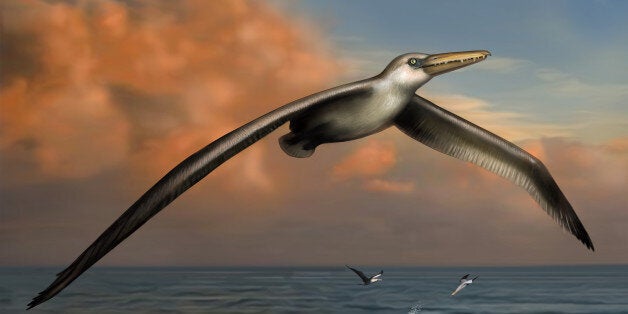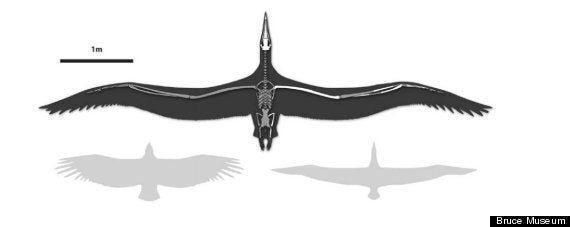
With wings spanning 24ft, it was the original Big Bird - the largest feathered creature that ever took to the air.
Pelagornis sandersi could spread its wings more than twice as wide as the Wandering Albatross, the biggest bird alive today by wingspan.
Scientists who identified the 27 million-year-old seabird believe it was an expert glider that used its vast wings to make epic soaring flights.
"Pelagornis sandersi could have travelled for extreme distances while crossing ocean waters in search of prey," said lead researcher Dr Daniel Ksepka, from the Bruce Museum in Connecticut, US.
The bird belonged to a jumbo-sized avian family called the Pelagornithids whose species once lived all over the world and vanished three million years ago.
"Pelagornithids were like creatures out of a fantasy novel - there is simply nothing like them around today," said Dr Ksepka.
Pelagornis sandersi's paper-thin hollow bones, stumpy legs and giant wings would have made it awkward on land, but a master of the air.

Above: California condor (left) and Royal Albatross (right) compared with the new species
Scientists believe it was too big to take off from a standstill by flapping its wings. Instead, it probably ran downhill into a headwind or took advantage of air gusts to get aloft, much like a hang glider.
Computer simulations conducted by Dr Ksepka's team indicate that P sandersi was an incredibly efficient glider.
Once airborne, it would have been able to soar effortlessly for miles over open ocean, occasionally swooping down to feed on soft-bodied prey such as squid and eels.
"That's important in the ocean, where food is patchy," said Dr Ksepka, whose research appears in the journal Proceedings of the National Academy of Sciences.
The bird's remains, consisting of a skull, wing bones and leg bones, were originally unearthed in 1983 during excavations for a new terminal at Charleston International Airport in South Carolina, US.
Scientists used them to estimate the creature's likely body size and flying style.
The bird was named after Albert Sanders, former curator of the Charleston Museum where the fossils are now housed, who led the team that made the discovery.